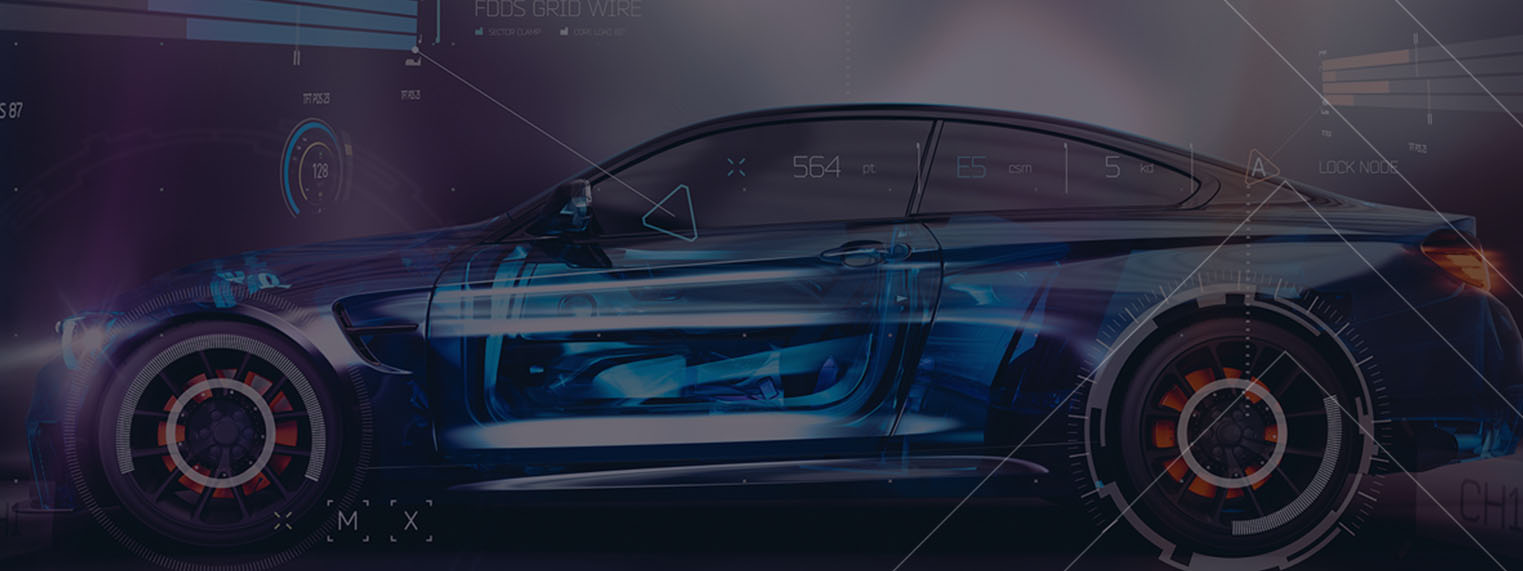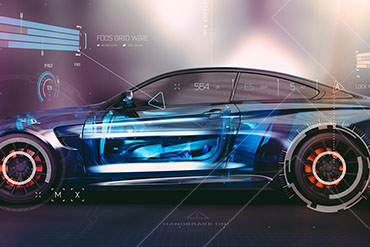
Global Automotive Market: Predictions For 2024
Come new year and I find myself reflecting on the rollercoaster ride that was 2023 for the automotive industry. Last year, we saw the auto sector grapple with challenges like declining EV sales, widespread strikes in U.S. factories, supply chain disruptions, and rising material costs. However, amidst these turbulent times, there were glimmers of hope and resilience. We saw car and commercial vehicle sales combined top 90mn with an astonishing double-digit growth rate. India surged ahead to become the fourth-largest auto market for light vehicles.
As 2024 begins, I am keen to share my team in MarketsandMarket’s insights and forecasts for an industry on the cusp of transformative changes, with significant advancements in connectivity, electrification, and sustainability. It’s a transformative time for the industry, and I’m excited to be part of this journey. While we wait for 2024 to unfold, let’s explore the key trends shaping this year’s global automotive market.
Electric Vehicles: A Slowdown, Not a Stall
Entering 2024, the automotive world is abuzz with innovation, yet there’s a palpable sense of caution amidst the excitement. EV sales, once skyrocketing, are now experiencing a noticeable slowdown. For example, in the U.S., EV sales in 2024 are expected to grow y-o-y by merely 16% compared to ~64% in 2023. In China, y-o-y growth in 2024 would be 11.1% compared to 36.5% in 2023. Factors like reduced incentives, limited charging infrastructure, and the saturation of early adopters are significant hurdles. To attract the mass market, industry leaders like Musk are lowering prices, which I think is a move in the right direction. However, this slowdown is prompting major players like GM, VW, and Ford to adjust their strategies, from cutting back production to delaying new model launches. Surprisingly, while battery electric vehicles (BEVs) are facing headwinds, plug-in hybrid electric vehicles (PHEVs) are gaining traction due to reduced upfront expenses and flexibility, effectively addressing concerns related to range anxiety.
China’s Continued Dominance in the EV Market
Amidst the sleek lines of cutting-edge EVs, China stands tall as a market giant and a global influencer, contributing 60% to worldwide EV sales. Its controlled supply chain, relentless innovation, and growing global presence solidify its leadership. By 2025, China is expected to capture 12% of the European EV market, fueled by competitive pricing, cutting-edge battery technology, and the growing popularity of Chinese electric car brands in the U.K. and other European and Asian markets. In 2024, China will firmly establish itself as a powerhouse in the EV revolution both in the home market and globally.
Surging Online Sales of Vehicles
Global online car sales where the full car buying experience is on-line is set to surge, reaching 7.1-7.3 million units by 2024. Many EV manufacturers are venturing into online sales, which are available in all major markets. North America leads the charge with a share of more than one-third of the global market, with APAC catching up rapidly, driven by tech-savvy younger generations. This trend encompasses used and new cars, with online platforms offering convenience and transparency. The automotive landscape is headed towards a future where fully online sales contribute significantly to total new car sales.
Redefined Luxury: A New Class of Car Emerges
Luxury automotive trends are undergoing a paradigm shift, with traditional players redefining the ‘ultra-luxury segment’ and non-luxury OEMs strategically positioning top-end models as luxury vehicles. We saw a significant shift in the last couple of years with SUVs becoming the ultimate uber luxury car of choice for the mega-rich, and it helped the margins of likes of Aston Martin, Lamborgini, and others. Once considered a niche market, EVs are gaining traction in the luxury segment, accounting for an estimated 15-17% of sales by 2024. Sustainability and luxury intertwine as the ultra-luxury segment emerges, driven by the growing global population of high-net-worth individuals. With its booming affluent population, China is at the forefront of this transformation, propelling the growth of the luxury vehicle market. As SUVs continue to dominate the segment, the allure of premium automotive experiences is poised to captivate consumers worldwide.
Plugging In for the Future: The EV Charging Revolution
In 2023, we saw some mainstream OEMs entering the charging market like Daimler and others tying up with Tesla to use its network. A continued significant surge in the number of charging stations is anticipated in 2024, with the total count projected to increase from 1.2 million in 2023 to around 2 million. Governments worldwide are investing in electric vehicle infrastructure, resulting in the expansion of public charging stations. DC fast-charging and ultra-fast charging are set to experience substantial growth, driven by the need to reduce charging times. Fast-charging technologies, especially in Asia-Pacific, are expected to triple between 2022 and 2024, led by China’s dominance. In 2024, we will see a growth of e-Forecourts and a rise in depot charging solutions. The number of chargers for new electric commercial vehicles is expected to grow from 280K in 2023 to 347K in 2024, with a majority of the increase contributed by DC chargers. Fast and ultra-fast chargers in depot settings for electric commercial vehicles are expected to grow at a CAGR of around 35% between 2023 and 2030.
The Used Car Market Takes Center Stage
The global used car market, particularly in Asia-Pacific, is on the cusp of significant growth. In 2023, sales reached approximately 94-96 million vehicles, a 3-4% increase, with expectations of a further 5-6% year-on-year growth in 2024. The market is becoming more organized, especially in the Business-to-Consumer (B2C) segment, which is expected to surpass 50% market share in both APAC and North America. This trend reflects a shift towards a more structured market. Despite mixed outcomes from recent IPOs, with firms like Vroom, Auto1, Cazoo, and CarTrade seeing lower stock prices post-IPO and Carvana showing robust performance, the sector is primed for transformation. The entry of online used car sellers and aggregators, like Droom in India, is disrupting the market, suggesting a dynamic future with established players and new entrants reshaping the landscape through innovation, customer trust, and convenience.
5G Takes the Wheel: The Connected Car Revolution
The impending rollout of 5G technology promises to revolutionize the automotive industry, unlocking a new era of connectivity and innovation in cars and future factories. Key automotive players like Audi, Mercedes-Benz, GM, Ford, Skoda, and Geely are integrating 5G into their smart factories, anticipating automation, safety, and operational efficiency improvements. This technology will revolutionize in-car experiences, enabling faster data transmission, low-latency communication, and upgraded navigation and infotainment systems. The expected annual growth rate for 5G adoption in the automotive sector is around 30-35% over the next 1-5 years. Beyond vehicles, 5G’s impact extends to connected living, offering more reliable and faster internet connectivity for real-time updates in smart devices and supporting a wide range of smart city applications, from traffic management to public safety. This technological leap forward is set to bridge the digital divide, enhance smart city infrastructure, and pave the way for advanced transportation systems and autonomous vehicles.
Generative AI: Shaping the Future of Cars
Generative AI is making significant strides across various applications in the automotive sector, from vehicle design to navigation, predictive maintenance, voice assistants, manufacturing, supply chain management, and quality control functions. This disruptive technology is reshaping how we interact with automobiles, enhancing safety, efficiency, and personalized experiences. As this technology gains traction, we’re witnessing a broader adoption of generative AI in the automotive landscape, with industry leaders integrating it into their products and services. Several industry stakeholders are adopting Gen AI in notable ways: Toyota and BMW are utilizing it for vehicle design, Tesla is incorporating it in Advanced Driver-Assistance Systems (ADAS), Continental is integrating it into digital cockpits, and Mercedes Benz is deploying it in Personal Voice Assistants. These developments signal a significant shift towards more intelligent and responsive automotive technologies.
Gearing Up for the Future: Other Trends to Watch in 2024
Smart manufacturing, gigacasting, digital twins, and the impending impact of Euro-7 norms are poised to shape the industry in 2024, bringing about efficiencies and redefining operational strategies.
Conclusion
The automotive landscape of 2024 looks like a glossy advert straight out of a luxury magazine. Electric vehicles, clearly, will be the winners here, adding a glamorous element to the dream of a clean, sustainable future while also spoiling the consumer with irresistible features. I’m excited to see how the technological advancements sweeping our lives will transform our vehicles. Better yet, I’m eager to navigate this change from the driver’s seat of a future-proof car bought online, powered by AI, and buzzing with the endless possibilities of a 5G-connected world.
It is indeed a thrilling time to be part of the automotive sector, both as a professional and as a consumer. I anticipate a year filled with breakthroughs and transformative experiences, even as the industry, despite a slowdown in growth rates for 2024, is on track to hit a landmark 100 million units in sales, including both passenger and commercial vehicles, by 2026. Let’s see what the year has in store for us!
Note: Article as published in Forbes.
80% of the Forbes Global 2000 B2B companies rely on MarketsandMarkets to identify growth opportunities in emerging technologies and use cases that will have a positive revenue impact.
- Leading Automated Guided Vehicle Companies 2024: An In-depth Analysis
- CHARGED UP: SHIFT TO E-MOBILITY AND THE EVOLUTION OF TRANSPORTATION
- Global Automotive Market: Predictions For 2024
- Revolutionizing Depot Charging: Hockey Stick Growth on the Cards
- The Future of Silicon Battery Industry: Innovations and Market Outlook

- Global Automotive Outlook – 2025 by Vehicle Type (Hatchback, Sedan, SUV, MPV, Vans, Pick-Ups/Light Trucks), Propulsion Type (ICE, Hybrid & Electric), and Region (China, India, North America, Europe, Rest of Asia, Rest of the World)
- Electric Light Commercial Vehicle Market by Propulsion (BEVs & FCEVs), Vehicle Type (E-Pickup Trucks, & E-Vans), and Region (North America, Asia Pacific, Europe) - Global Forecast 2030
- Software Defined Vehicle Market by SDV Type (Semi-SDV. SDV), E/E Architecture (Distributed, Domain Centralised, Zonal Control), Vehicle Type (Passenger Car and Light Commercial Vehicle) and Region - Global Forecast to 2030

